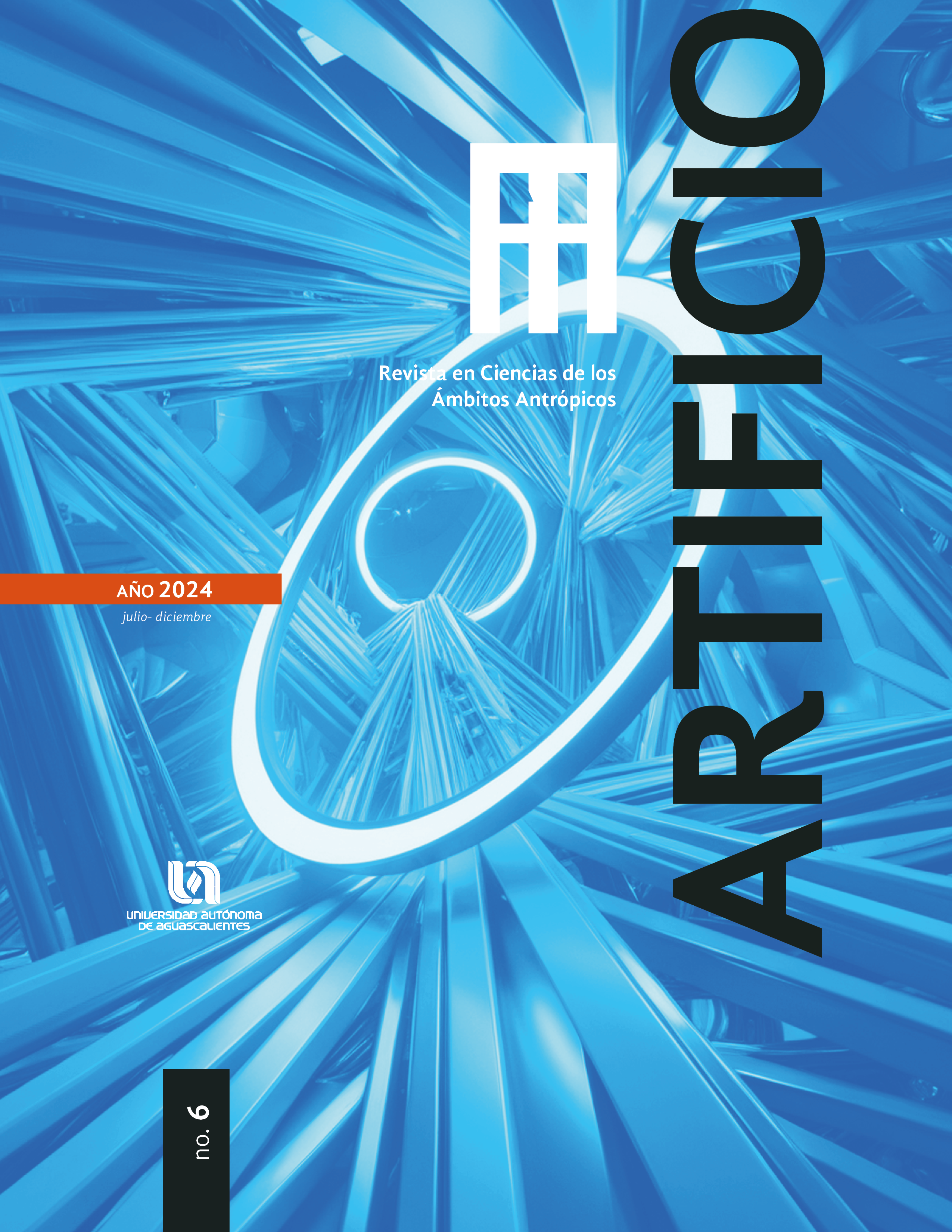The sustainable public space as an option for circular design applied to the city and urban design
DOI:
https://doi.org/10.33064/artificio620246523Keywords:
public space, sustainability, curricular design, urban designAbstract
This work broadly examines the positive impact of incorporating a circular economy and design model into the conception and realization of sustainable urban spaces, emphasizing their integration within a design culture in habitat design schools. It is crucial to view these spaces as fundamental components of the cycles of design, production, use, and maintenance, as well as the activities and processes that occur within them. Such an approach aims to enhance the quality of life for populations by embedding the concept of “Circular Design” into educational environments dedicated to teaching architecture, urban design, and habitable space design.
Understanding the elements that a sustainable urban space encompasses throughout its entire lifecycle—selection, diagnosis, planning, design, construction, maintenance, operation, evaluation, and monitoring—enables their comparison and integration into appropriate circular design strategies. These strategies aim to minimize negative impacts on both the natural and human environment while benefiting user populations and harmonizing with the natural and built ecosystem.
Downloads
References
Beatley, T., & Manning, K. (1997). The ecology of place: Planning for environment, economy, and community. Island Press.
Brown, G., & Reed, P. (2009). Public participation GIS: A new method for use in national park planning. Landscape and Urban Planning, 92(1), 1-15). DOI: https://doi.org/10.1016/j.landurbplan.2011.03.003
Carmona, M., Heath, T., Oc, T., & Tiesdell, S. (2003). Public places, urban spaces: The dimensions of urban design. Architectural Press.
Circulab. Diseño circular: ¿el siguiente paso del pensamiento de diseño? 1 de septiembre de 2023. https://circulab.com/es/circular-design-what-is-it/ (último acceso: 1 de septiembre de 2023).
eco circular. Diseño circular: donde todo empieza y termina ¿O será, vuelve a empezar? 30 de abril de 2021. https://eco-circular.com/2021/04/30/diseno-circular-donde-todo-empieza-y-termina-o-sera-vuelve-a-empezar/ (último acceso: 1 de septiembre de 2023).
Escuela Superior de Diseño de Barcelona. ES DESIGN. 1 de Septiembre de 2023. https://www.esdesignbarcelona.com/actualidad/diseno-producto/diseno-circular (último acceso: 1 de Septiembre de 2023).
Frosch, R. A., & Gallopoulos, N. E. (1989). Strategies for manufacturing. Scientific American, 261(3), 144-152). DOI: https://doi.org/10.1038/scientificamerican0989-144
Ghisellini, P., Cialani, C., & Ulgiati, S. (2016). A review on circular economy: The expected transition to a balanced interplay of environmental and economic systems. Journal of Cleaner Production, 114, 11-32 DOI: https://doi.org/10.1016/j.jclepro.2015.09.007
Hart, S. L., & Milstein, M. B. (2003). Creating sustainable value. Academy of Management Perspectives, 17(2), 56-67). DOI: https://doi.org/10.5465/ame.2003.10025194
Litman, T. (2003). Sustainable transportation planning: Tools for creating vibrant, healthy, and resilient communities. New Society Publishers.
McDonough, W., & Braungart, M. (2002). Cradle to cradle: Remaking the way we make things. North Point Press.
Ministerio de Vivienda y Urbanismo - Minvu. Manual de Elementos Urbanos SustentablesSustentables, Tomo I: Sustentabilidad en el Espacio Público y Recomendaciones para Chile. Santiago, Chile: División Técnica de Estudio y Fomento Habitacional - Ditec, 2017.
Noticias Parlamento Europeo. Economía circular: definición, importancia y beneficios. 24 de mayo de 2023. https://www.europarl.europa.eu/news/es/headlines/economy/20151201STO05603/economia-circular-definicion-importancia-y-beneficios#:~:text=La%20econom%C3%ADa%20circular%20es%20un,de%20los%20productos%20se%20extiende. (último acceso: 01 de septiembre de 2023).
Organización de las Naciones Unidas. Noticias ONU. 26 de Marzo de 2021. https://news.un.org/es/story/2021/03/1490082 (último acceso: 01 de septiembre de 2023).
Pearce, David W. y Turner, Kerry. 1989. Economics of Natural Resources and the Environment. Baltimore: The John Hopkins University Press.
REAL ACADEMIA ESPAÑOLA. Diccionario de la lengua española, 23.ª ed. 1 de septiembre de 2023. https://dle.rae.es (último acceso: 1 de septiembre de 203).
Register, R. (2006). Ecocities: Rebuilding cities in balance with nature. New Society Publishers.
Downloads
Published
Versions
- 2024-12-26 (2)
- 2024-12-26 (1)
How to Cite
Issue
Section
License
Copyright (c) 2024 Artificium

This work is licensed under a Creative Commons Attribution-NonCommercial-ShareAlike 4.0 International License.
Artificio Journal provides open access to its content, based on the principle that offering free access to research helps to increase the global exchange of knowledge. Artificio does not and will not charge any subscription fees to its readers, nor to authors for submitting, processing or publishing their articles.
As a condition of publication, authors agree to release their copyright under a shared license, specifically the Creative Commons Attribution-NonCommercial-ShareAlike 4.0 International license.
This licence allows anyone to share, copy and redistribute the material in any medium or format under the following terms:
*Credit the author of the text
*Do not use the material for commercial purposes
*Do not transform or modify the material.











